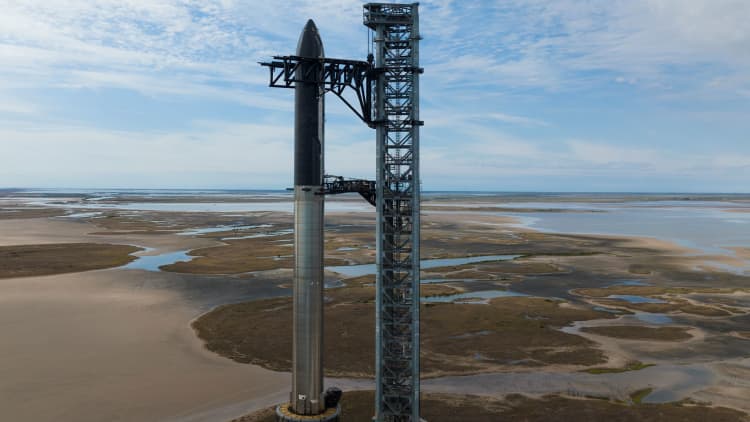A mass simulator version of a New Glenn rocket is moved for testing in November 2021.
Blue Origin
The Pentagon announced the first winning bidders in its rocket launch contract sweepstakes on Thursday, with Jeff Bezos‘ Blue Origin grabbing a spot for the first time.
Blue Origin’s winning bid came as part of contracts awarded under the Pentagon’s $5.6 billion National Security Space Launch program.
Elon Musk’s SpaceX and United Launch Alliance – also known as ULA, the joint venture of Lockheed Martin and Boeing – were also awarded contracts as part of the multi-year third phase of the NSSL program.
Blue Origin, SpaceX, and ULA did not immediately respond to CNBC requests for comment.
Under the program, known as NSSL Phase 3 Lane 1, the trio of companies will be eligible to compete for contracts through mid-2029.
ULA and SpaceX have already been competing for contracts under the previous Phase 2 edition of NSSL: In total, over five years of Phase 2 launch orders, the military assigned ULA with 26 missions worth $3.1 billion, while SpaceX got 22 missions worth $2.5 billion.
Blue Origin, as well as Northrop Grumman, missed out on Phase 2 when the Pentagon selected ULA and SpaceX for the program in August 2020.
A Falcon Heavy rocket launches the USSF-67 mission from NASA’s Kennedy Space Center in Florida, Jan. 15, 2023.
SpaceX
But with Phase 3, the U.S. military is raising the stakes — and widening the field — on a high-profile competition for Space Force mission contracts. Phase 3 is expected to see 90 rocket launch orders in total, with a split approach of categories Lane 1 and Lane 2 to allow even more companies to bid.
Space Force outlined a “mutual fund” strategy to buying launches from companies under Phase 3: The military branch split the program into two lanes, in order to have one that features three companies fulfilling the most demanding and expensive missions, and the other that




